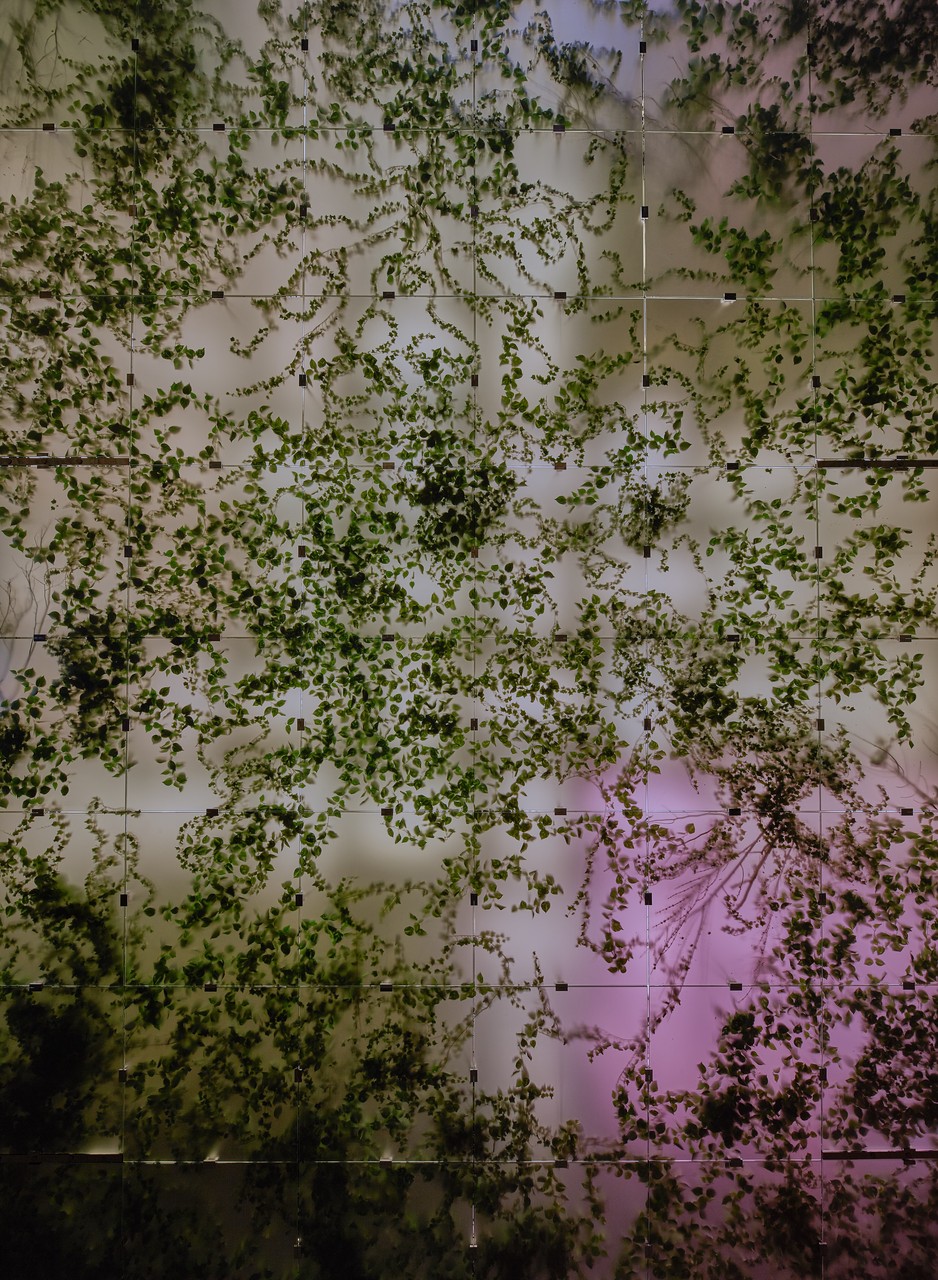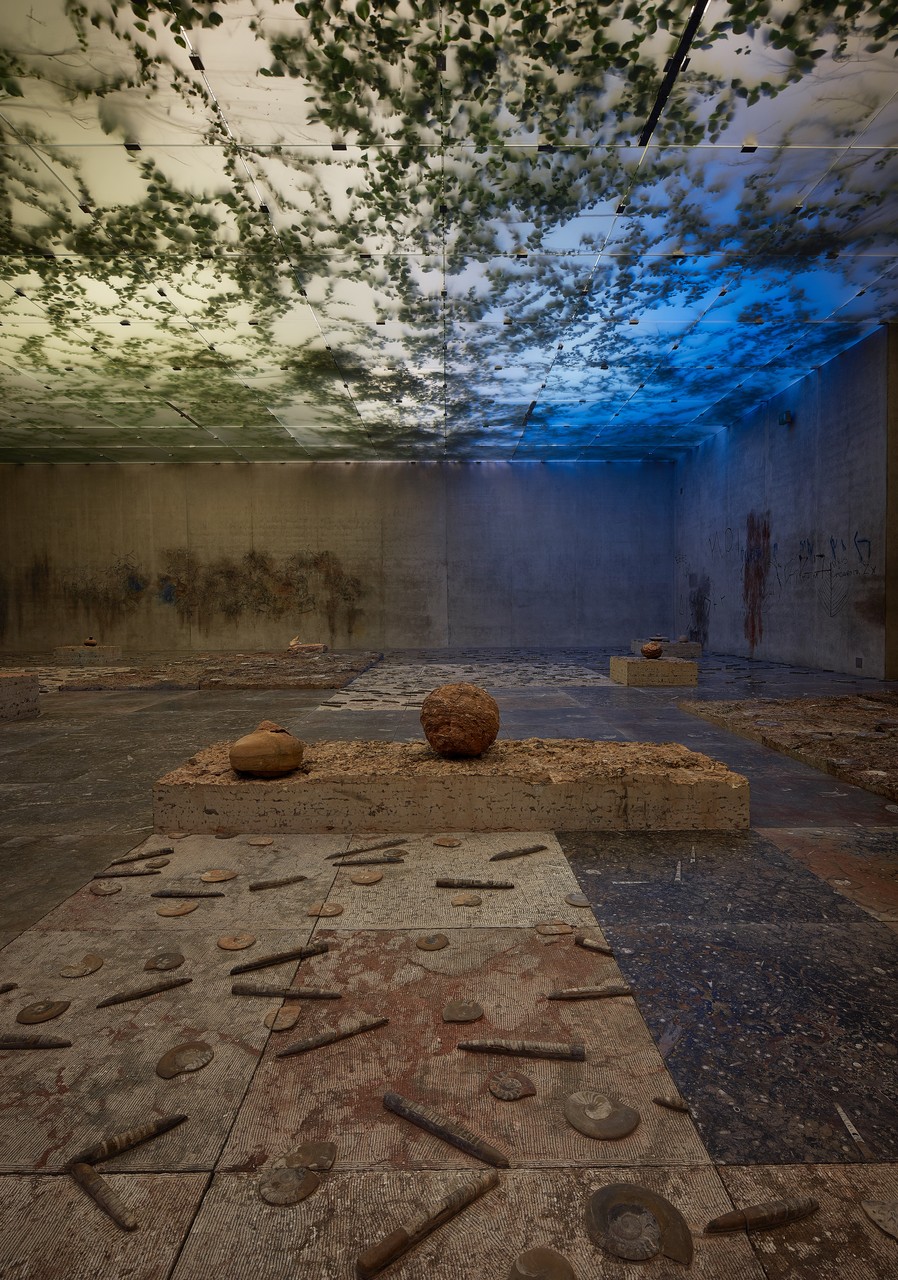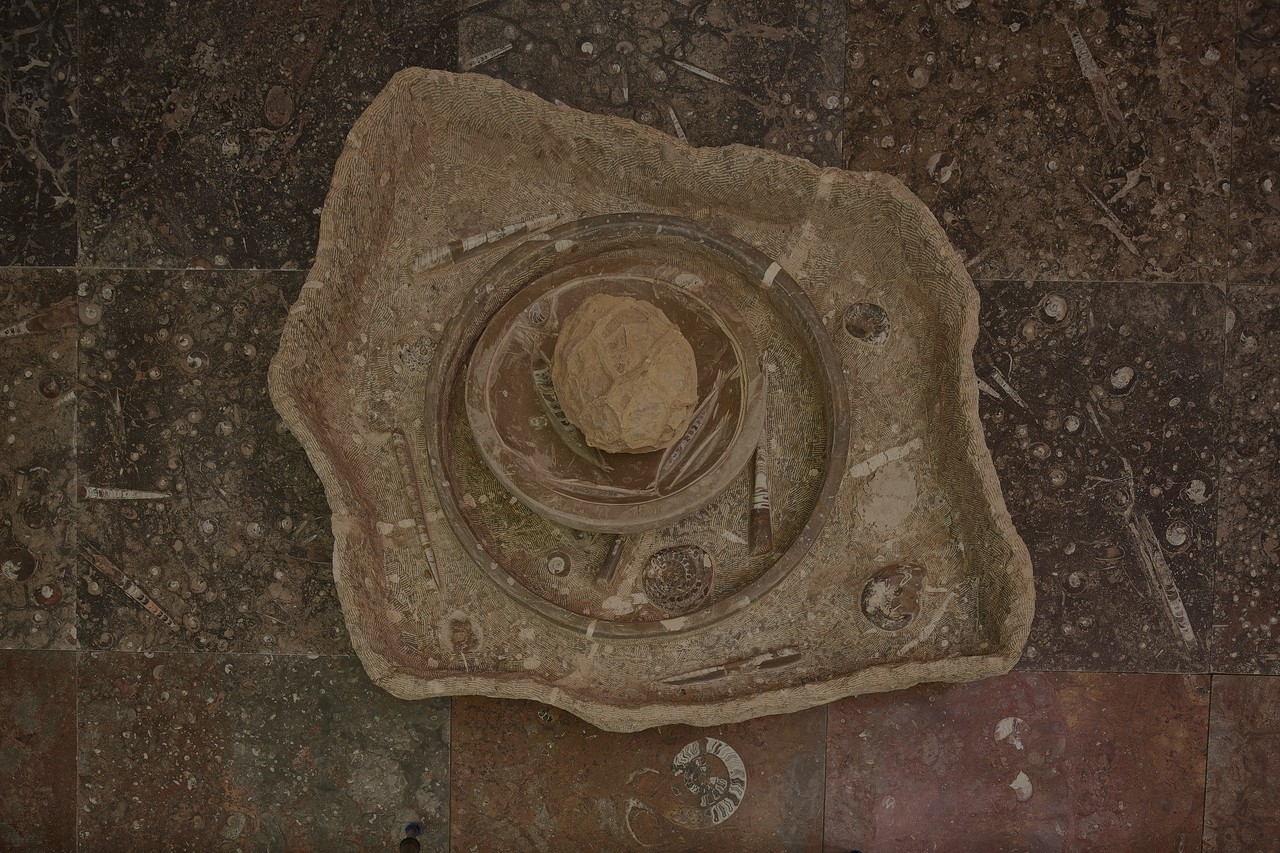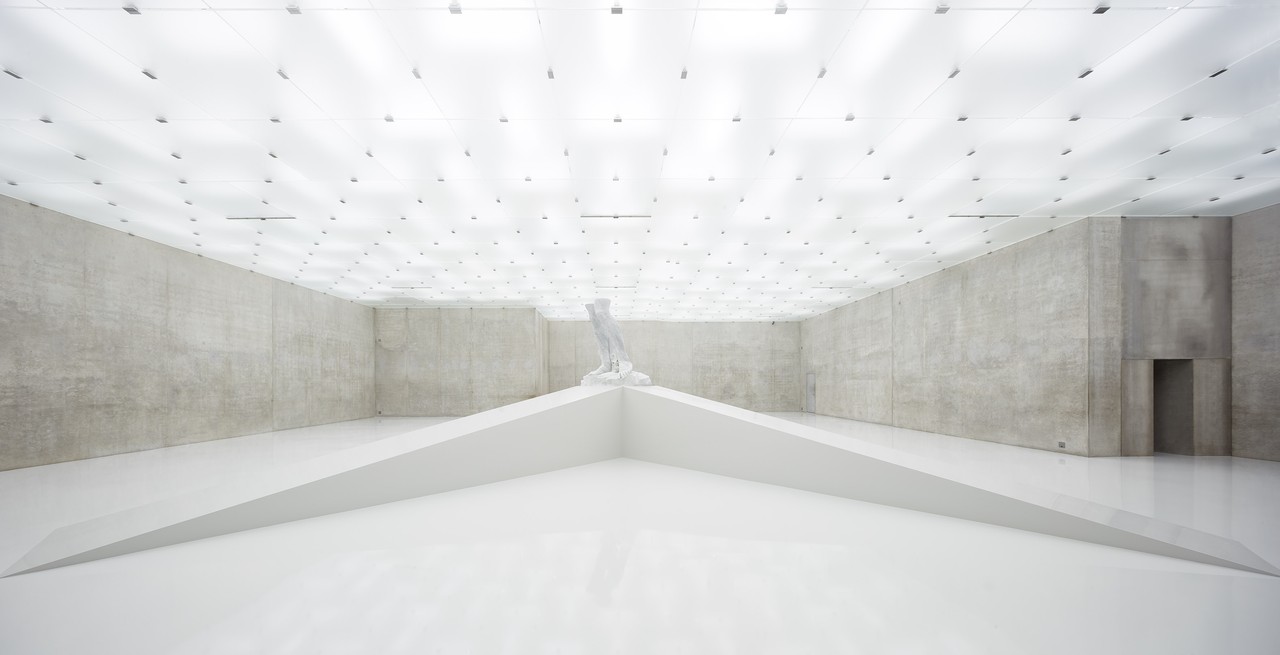Adrián Villar Rojas
The Theater of Disappearance
13 May - 27 Aug 2017

Adrián Villar Rojas
The Theater of Disappearance, 2017
Exhibition view ground floor, Kunsthaus Bregenz
Photo: Jörg Baumann
Courtesy of Adrián Villar Rojas, Marian Goodman Gallery, New York | Paris | London and kurimanzutto, Mexiko City
© Adrián Villar Rojas, Kunsthaus Bregenz
The Theater of Disappearance, 2017
Exhibition view ground floor, Kunsthaus Bregenz
Photo: Jörg Baumann
Courtesy of Adrián Villar Rojas, Marian Goodman Gallery, New York | Paris | London and kurimanzutto, Mexiko City
© Adrián Villar Rojas, Kunsthaus Bregenz

Adrián Villar Rojas
The Theater of Disappearance, 2017
Exhibition view ground floor, Kunsthaus Bregenz
Photo: Jörg Baumann
Courtesy of Adrián Villar Rojas, Marian Goodman Gallery, New York | Paris | London and kurimanzutto, Mexiko City
© Adrián Villar Rojas, Kunsthaus Bregenz
The Theater of Disappearance, 2017
Exhibition view ground floor, Kunsthaus Bregenz
Photo: Jörg Baumann
Courtesy of Adrián Villar Rojas, Marian Goodman Gallery, New York | Paris | London and kurimanzutto, Mexiko City
© Adrián Villar Rojas, Kunsthaus Bregenz

Adrián Villar Rojas
The Theater of Disappearance, 2017
Exhibition view ground floor, Kunsthaus Bregenz
Photo: Jörg Baumann
Courtesy of Adrián Villar Rojas, Marian Goodman Gallery, New York | Paris | London and kurimanzutto, Mexiko City
© Adrián Villar Rojas, Kunsthaus Bregenz
The Theater of Disappearance, 2017
Exhibition view ground floor, Kunsthaus Bregenz
Photo: Jörg Baumann
Courtesy of Adrián Villar Rojas, Marian Goodman Gallery, New York | Paris | London and kurimanzutto, Mexiko City
© Adrián Villar Rojas, Kunsthaus Bregenz

Adrián Villar Rojas
The Theater of Disappearance, 2017
Exhibition view first floor, Kunsthaus Bregenz
Photo: Jörg Baumann
Courtesy of Adrián Villar Rojas, Marian Goodman Gallery, New York | Paris | London and kurimanzutto, Mexiko City
© Adrián Villar Rojas, Kunsthaus Bregenz
The Theater of Disappearance, 2017
Exhibition view first floor, Kunsthaus Bregenz
Photo: Jörg Baumann
Courtesy of Adrián Villar Rojas, Marian Goodman Gallery, New York | Paris | London and kurimanzutto, Mexiko City
© Adrián Villar Rojas, Kunsthaus Bregenz

Adrián Villar Rojas
The Theater of Disappearance, 2017
Exhibition view first floor, Kunsthaus Bregenz
Photo: Jörg Baumann
Courtesy of Adrián Villar Rojas, Marian Goodman Gallery, New York | Paris | London and kurimanzutto, Mexiko City
© Adrián Villar Rojas, Kunsthaus Bregenz
The Theater of Disappearance, 2017
Exhibition view first floor, Kunsthaus Bregenz
Photo: Jörg Baumann
Courtesy of Adrián Villar Rojas, Marian Goodman Gallery, New York | Paris | London and kurimanzutto, Mexiko City
© Adrián Villar Rojas, Kunsthaus Bregenz

Adrián Villar Rojas
The Theater of Disappearance, 2017
Exhibition view first floor, Kunsthaus Bregenz
Photo: Jörg Baumann
Courtesy of Adrián Villar Rojas, Marian Goodman Gallery, New York | Paris | London and kurimanzutto, Mexiko City
© Adrián Villar Rojas, Kunsthaus Bregenz
The Theater of Disappearance, 2017
Exhibition view first floor, Kunsthaus Bregenz
Photo: Jörg Baumann
Courtesy of Adrián Villar Rojas, Marian Goodman Gallery, New York | Paris | London and kurimanzutto, Mexiko City
© Adrián Villar Rojas, Kunsthaus Bregenz

Adrián Villar Rojas
The Theater of Disappearance, 2017
Exhibition view first floor, Kunsthaus Bregenz
Photo: Jörg Baumann
Courtesy of Adrián Villar Rojas, Marian Goodman Gallery, New York | Paris | London and kurimanzutto, Mexiko City
© Adrián Villar Rojas, Kunsthaus Bregenz
The Theater of Disappearance, 2017
Exhibition view first floor, Kunsthaus Bregenz
Photo: Jörg Baumann
Courtesy of Adrián Villar Rojas, Marian Goodman Gallery, New York | Paris | London and kurimanzutto, Mexiko City
© Adrián Villar Rojas, Kunsthaus Bregenz

Adrián Villar Rojas
The Theater of Disappearance, 2017
Exhibition view third floor, Kunsthaus Bregenz
Photo: Jörg Baumann
Courtesy of Adrián Villar Rojas, Marian Goodman Gallery, New York | Paris | London and kurimanzutto, Mexiko City
© Adrián Villar Rojas, Kunsthaus Bregenz
The Theater of Disappearance, 2017
Exhibition view third floor, Kunsthaus Bregenz
Photo: Jörg Baumann
Courtesy of Adrián Villar Rojas, Marian Goodman Gallery, New York | Paris | London and kurimanzutto, Mexiko City
© Adrián Villar Rojas, Kunsthaus Bregenz

Adrián Villar Rojas
The Theater of Disappearance, 2017
Exhibition view third floor, Kunsthaus Bregenz
Photo: Jörg Baumann
Courtesy of Adrián Villar Rojas, Marian Goodman Gallery, New York | Paris | London and kurimanzutto, Mexiko City
© Adrián Villar Rojas, Kunsthaus Bregenz
The Theater of Disappearance, 2017
Exhibition view third floor, Kunsthaus Bregenz
Photo: Jörg Baumann
Courtesy of Adrián Villar Rojas, Marian Goodman Gallery, New York | Paris | London and kurimanzutto, Mexiko City
© Adrián Villar Rojas, Kunsthaus Bregenz
ADRIÁN VILLAR ROJAS
The Theater of Disappearance
13 May — 27 August 2017
»Adrián Villar Rojas is presenting The Theater of Disappearance, one of the most impressive and elaborate exhibitions in the KUB history, on the occasion of its 20th anniversary, in the summer.«
Thomas D. Trummer
Adrián Villar Rojas has become renowned for his site-specific work. At the Bienal del Fin del Mundo 2009 in Patagonia, a lithic whale lay stranded in a forest. For the 2011 Venice Biennale, the artist erected a forest of stone creatures, extending to the ceiling like surreal pillars. He thinks in terms of geological periods, equating prehistoric history and the distant future in his imagery.
Villar Rojas’ exhibition The Theater of Disappearance has already secured its place in the history of Kunsthaus Bregenz. The artist has conceived a passage through human culture from its origins to its apotheosis,
The ground floor provides Adrián Villar Rojas’ exhibition with a completely empty stage. Even the ticket counter has been removed. Colored light streams through the windows. A reproduction of the painting Madonna del Parto (1450–1475) by Piero della Francesca extends across the floor, depicting a pregnant Madonna.
The first floor is darkened, flora hanging from its ceiling, the floor space paved in brown marble, the fossils within it meticulously exposed. Is this an ancient place of worship, at the origins of man, or the vaults of his tragic existence?
The second floor is likewise darkened, a copy of Picasso’s Guernica (1937) located in the middle. Villar Rojas adds a bar of fire, flickering along its lower edge. An image of a bearded hunter is displayed adjacent to one of two dinosaurs. An iron basket hangs from the ceiling. Humans exist in the world and, with them, carnage and violence.
The atmosphere changes on the predominantly white upper floor. The legs of Michelangelo’s David (1501—1504) are enthroned on a ramp. Humanity has arrived in Olympus, abandoning Earth, a cyber spider is the last remaining witness to humanity’s disappearance — a post-apocalyptic scenario.
The Theater of Disappearance
13 May — 27 August 2017
»Adrián Villar Rojas is presenting The Theater of Disappearance, one of the most impressive and elaborate exhibitions in the KUB history, on the occasion of its 20th anniversary, in the summer.«
Thomas D. Trummer
Adrián Villar Rojas has become renowned for his site-specific work. At the Bienal del Fin del Mundo 2009 in Patagonia, a lithic whale lay stranded in a forest. For the 2011 Venice Biennale, the artist erected a forest of stone creatures, extending to the ceiling like surreal pillars. He thinks in terms of geological periods, equating prehistoric history and the distant future in his imagery.
Villar Rojas’ exhibition The Theater of Disappearance has already secured its place in the history of Kunsthaus Bregenz. The artist has conceived a passage through human culture from its origins to its apotheosis,
The ground floor provides Adrián Villar Rojas’ exhibition with a completely empty stage. Even the ticket counter has been removed. Colored light streams through the windows. A reproduction of the painting Madonna del Parto (1450–1475) by Piero della Francesca extends across the floor, depicting a pregnant Madonna.
The first floor is darkened, flora hanging from its ceiling, the floor space paved in brown marble, the fossils within it meticulously exposed. Is this an ancient place of worship, at the origins of man, or the vaults of his tragic existence?
The second floor is likewise darkened, a copy of Picasso’s Guernica (1937) located in the middle. Villar Rojas adds a bar of fire, flickering along its lower edge. An image of a bearded hunter is displayed adjacent to one of two dinosaurs. An iron basket hangs from the ceiling. Humans exist in the world and, with them, carnage and violence.
The atmosphere changes on the predominantly white upper floor. The legs of Michelangelo’s David (1501—1504) are enthroned on a ramp. Humanity has arrived in Olympus, abandoning Earth, a cyber spider is the last remaining witness to humanity’s disappearance — a post-apocalyptic scenario.
